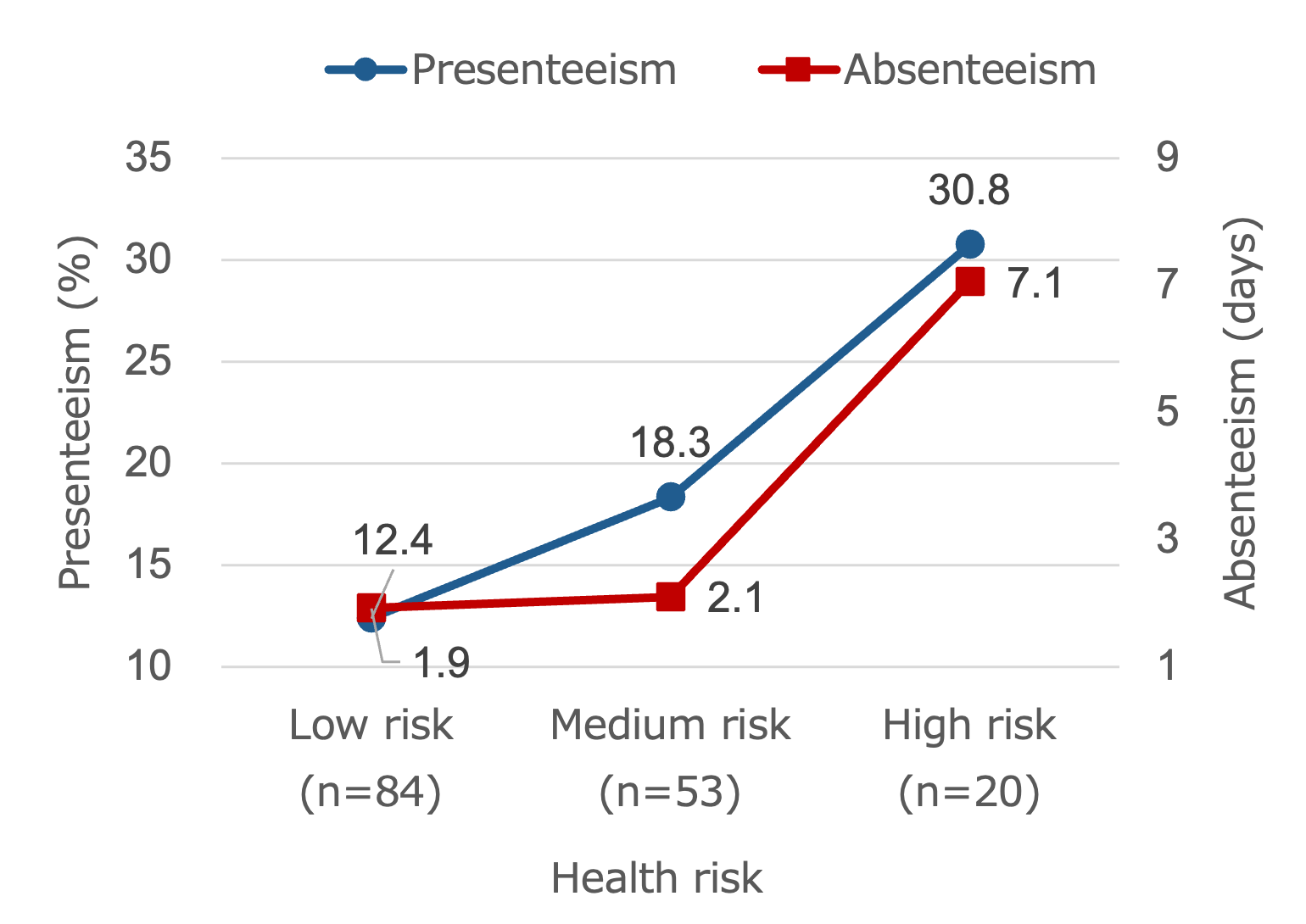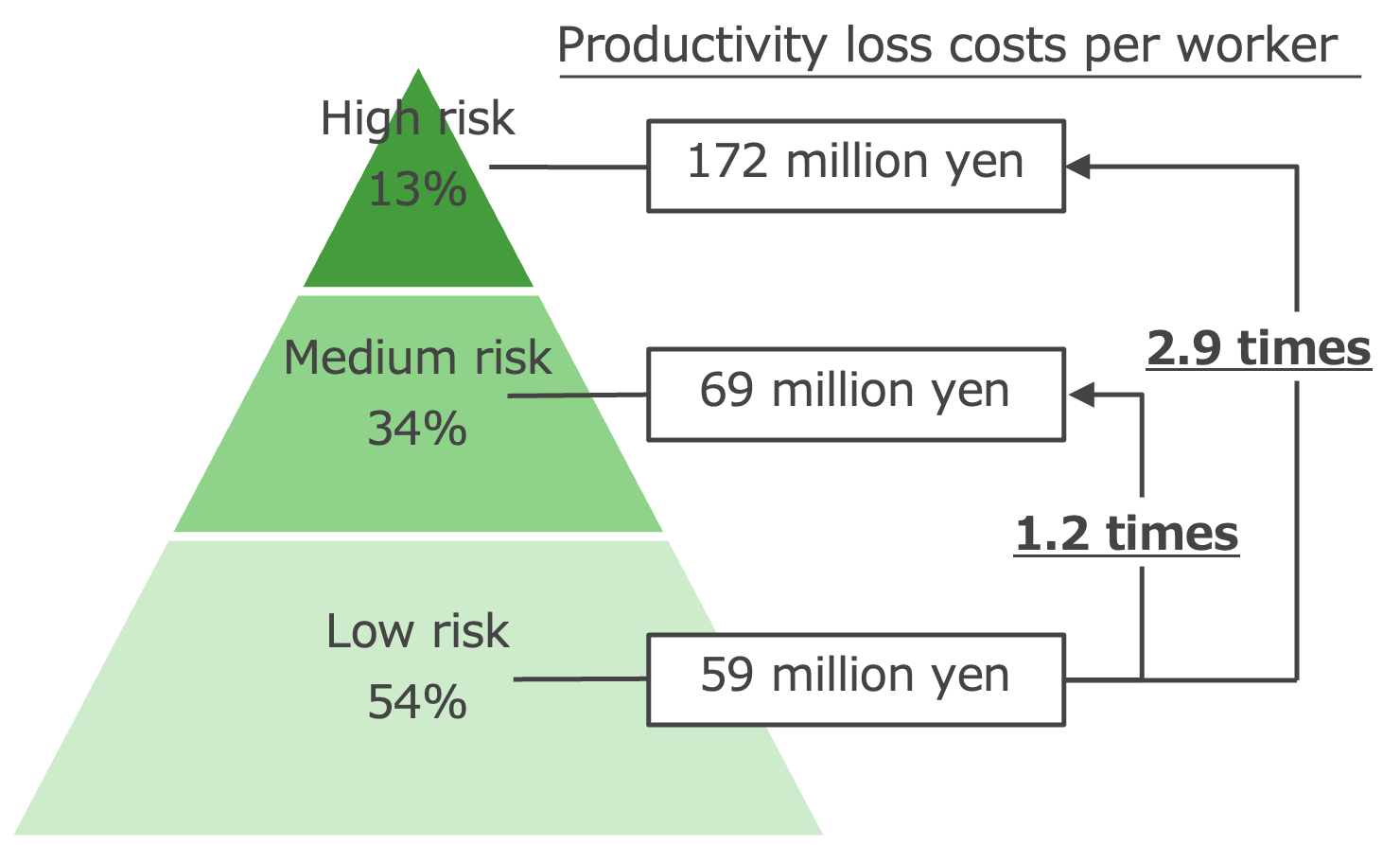The characteristics and context of the development of the SPQ
There are several known indices that are used as scales for measuring presenteeism, both inside and outside of Japan, such as WHO-HPQ* (the Health and Work Performance Question). However, the WHO-HPQ poses its questions in technical language, making its use difficult in real-life situations.
The predecessor of the Healthcare Data Science Research Unit, the Health and Productivity Management Policy Research Unit, proposed the SPQ (Single-Item Presenteeism Question, the University of Tokyo single-item edition) as a scale for measuring presenteeism using one simple question that encourages respondents to reflect on their own performance.
The SPQ question and the calculation of presenteeism
The SPQ can easily measure presenteeism using a single question. As an example, if an employee answers “70%” to the question asked, their presenteeism score is estimated to be 30%.
Click here to download the question.
Question:
On a scale from 1% to 100%, where 100% is the best job performance you could have at your job if unimpeded by sickness or injury, how would you rate your overall job performance on the days you worked during the past four weeks (28 days)?
% (1% to 100%) Scoring:
Presenteeism = 100% - answer
A previous study of the measurement scale associated with the SPQ
A verification study based on the COSMIN Study Design checklist 1) found that the SPQ had sufficient construct validity 2) when compared to the WHO-HPQ. In terms of responsiveness 3), the SPQ demonstrated the expected changes in response to changes in factors related to presenteeism (such as absenteeism 4) and stress; lifestyle habit risks; and work engagements 5)).
- 1) Guidelines pertaining to a measurement scale study: https://www.cosmin.nl/
- 2) Construct validity: An index that indicates the extent to which the theoretical characteristics (construct), which the question attempts to gauge, are being successfully evaluated.
- 3) Responsiveness: An index that indicates whether the question was able to sensitively detect any changes.
- 4) Absenteeism: This refers to being absent from work due to a poor physical and/or mental state.
- 5) Work engagement: A state in which an individual actively engages in their work and is invigorated by it.
References:
Muramatsu K, Nakao K, Ide H, Furui Y. Testing the construct validity and responsiveness of the Single-item Presenteeism Question. J Occup Environ Med. 2021;63(4): e187-e196

Characteristics of the SPQ
Presenteeism as measured by the SPQ (hereinafter “SPQ presenteeism”) had three characteristics that were not observed in the relationship between the WHO-HPQ and various factors in the previous study of the measurement scale of the SPQ.
- The SPQ presenteeism was significantly related to lifestyle risks, such as poor diet, lack of sleep, and smoking.
- Respondents who were evaluated as having low SPQ presenteeism, or who demonstrated high-level performance, were found to have significantly lower absenteeism risks, mental health risks, and sleep risks than respondents who demonstrated moderate performance.
- The SPQ presenteeism shows relatively minor differences in relation to gender, age class, job content, and/or the employment format, and is unaffected by differences in the respondents’ attributes.
SPQ presenteeism and health risks
Employees with numerous health risks, such as those related to mental and physical conditions and lifestyle habits, have been found to have approximately three times the SPQ presenteeism as employees with few health risks. Multiplying each employee’s SPQ presenteeism and absenteeism (number of days of absence from work) by remuneration and converting the product to a cost indicates an average loss of approximately 1 million yen per person. This suggests the importance of improving employees’ work productivity through H&PM initiatives from the perspective of corporate management.


References:
Yuji F, Kenji M, Hiroo I. Loss of work productivity in small to medium enterprises and its contributory factors. Japanese Journal of Labour Studies. 2018;2018(695): 49-61.
